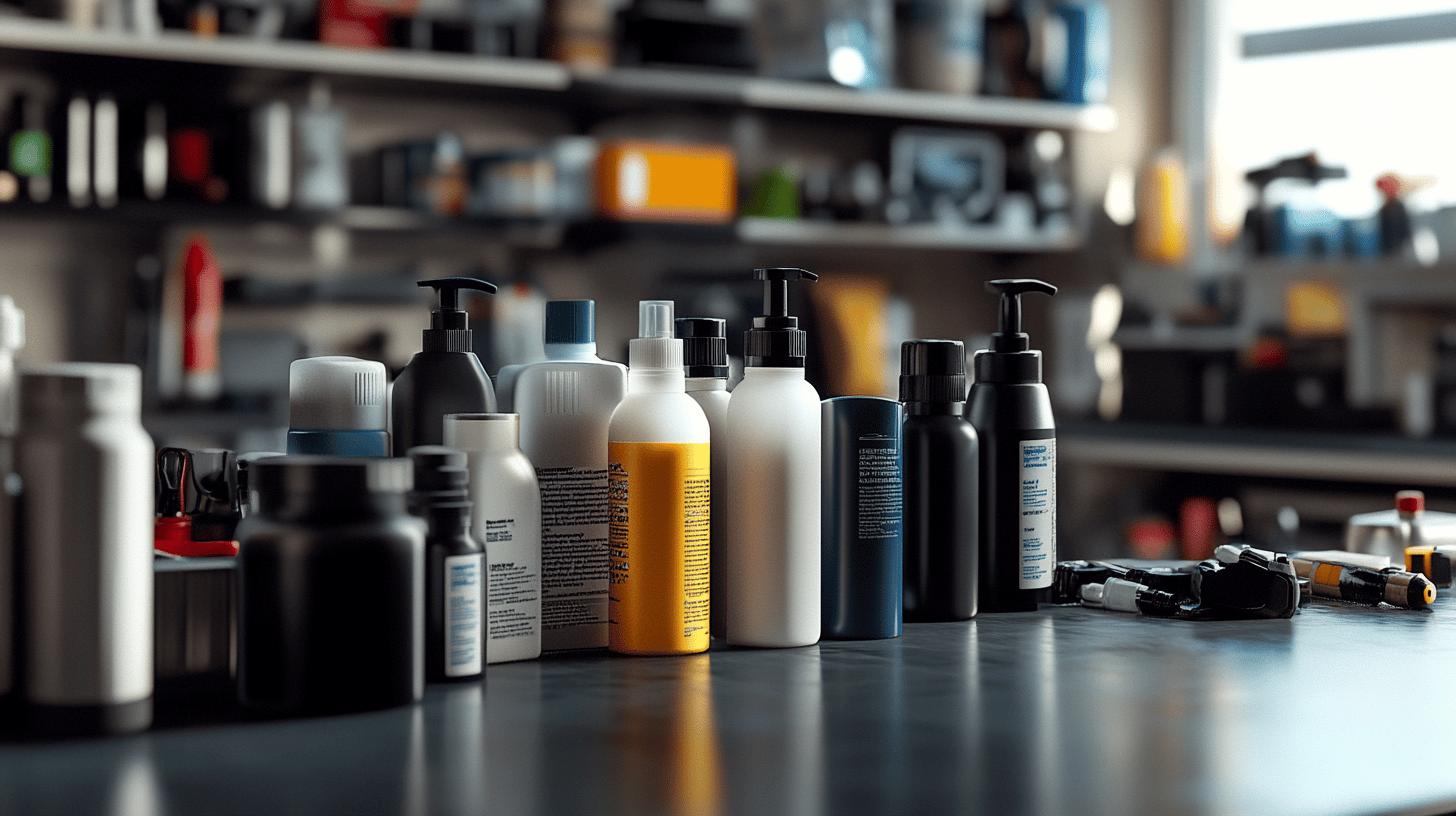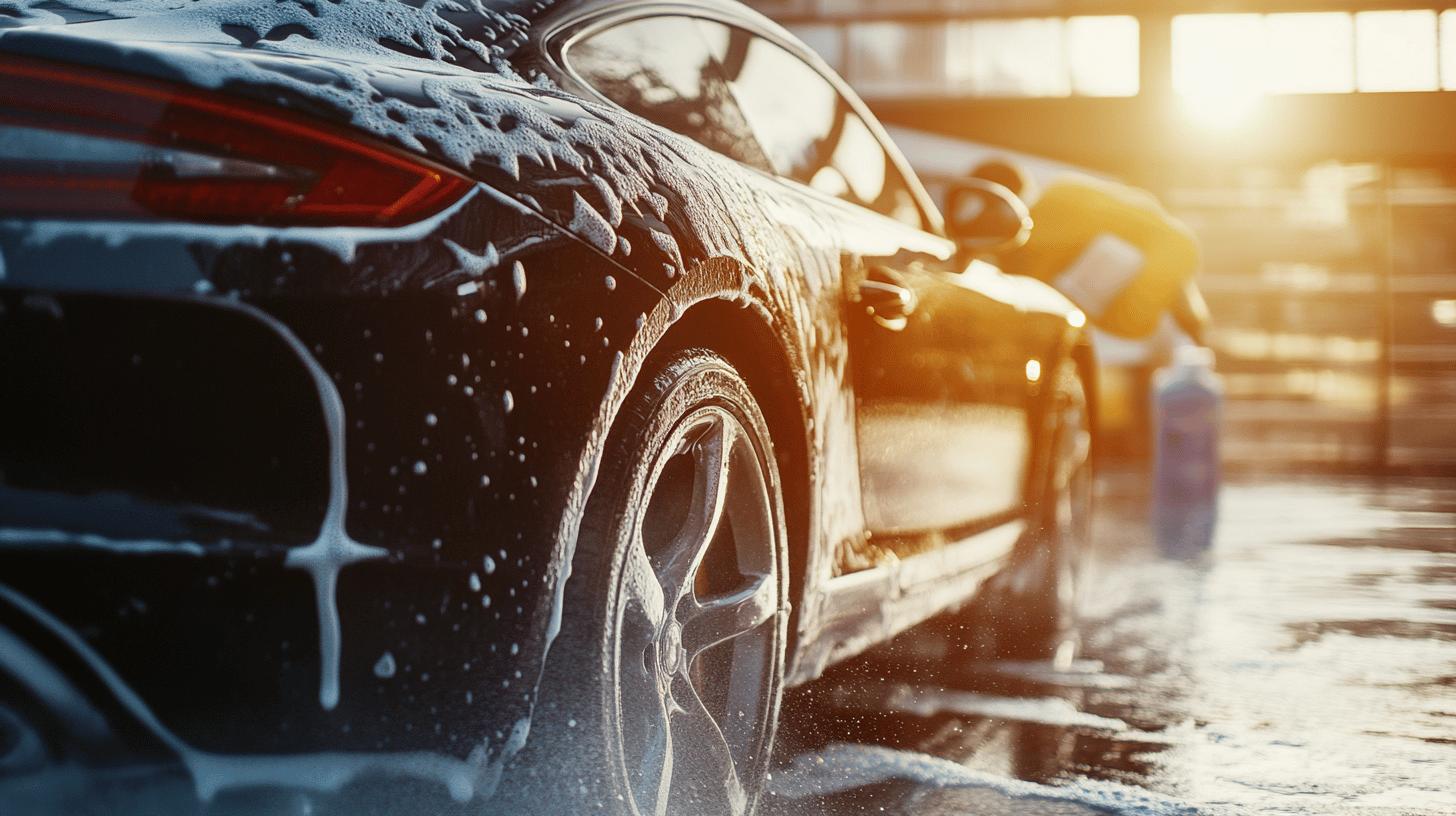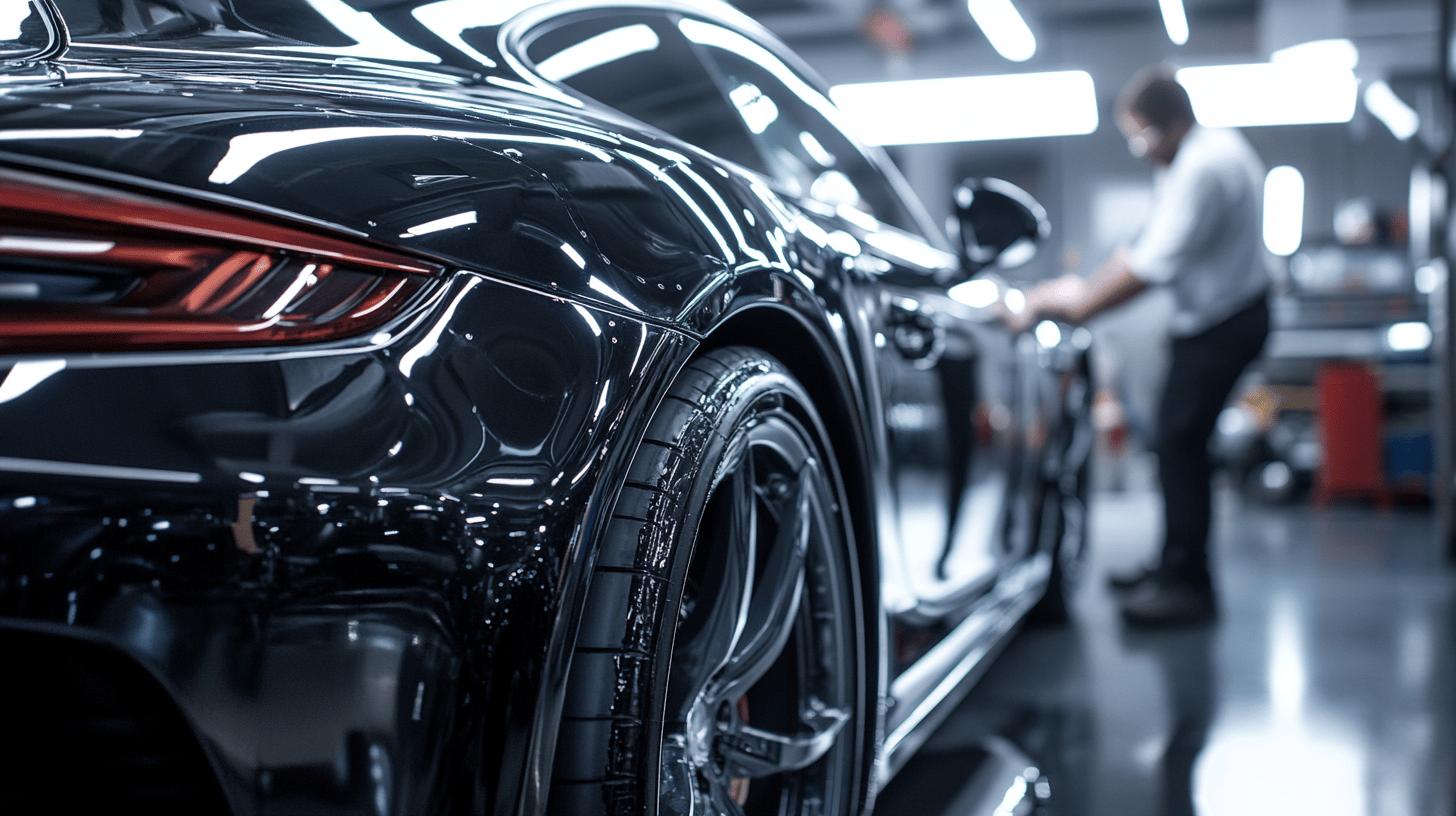Is investing in paint protection products worth the money, or are they just another gimmick? If you’re tired of seeing your car’s gleaming finish marred by scratches, bird droppings, or harsh UV rays, you’re not alone. Protecting your car paint can be akin to armouring a knight for battle; it’s about ensuring its shield is intact against relentless adversaries. But do these products deliver on their promise, or are they merely cosmetic band-aids? In this article, we delve into the world of paint protection to help you understand whether these investments truly pay off.
Understanding Paint Protection Products
Car paint protection products and techniques are designed to shield a vehicle’s exterior paint from potential damages. These products help maintain the paint’s original appearance by protecting against various environmental factors and minor abrasions.
There are several types of car paint protection products available, each offering different levels of protection. Ceramic coatings provide a durable layer that guards against UV rays, bird droppings, tree sap, and dirt. Waxes offer a more temporary solution, often needing reapplication every few weeks to months, and protect primarily against UV radiation and water spots. Sealants, which last longer than waxes, offer mid-level protection against UV rays and environmental contaminants. Paint Protection Films (PPF) are a more robust option, defending against stone chips, minor abrasions, and small dents.
- Ceramic Coatings: Protection against UV rays, bird droppings, tree sap, and dirt.
- Waxes: Protection against UV radiation and water spots.
- Sealants: Mid-level protection against UV rays and environmental contaminants.
- Paint Protection Films (PPF): Protection against stone chips, minor abrasions, and small dents.
Using these products can significantly extend the life of your car’s paint, maintaining its aesthetic appeal and resale value. By offering protection against various damaging elements, these products help keep your vehicle looking newer for longer periods.
Cost and Benefits of Paint Protection Products
The upfront cost of paint protection products can vary significantly. Paint Protection Film (PPF) can range from several hundred to a couple of thousand pounds, depending on the coverage area and film quality. Ceramic coatings and sealants are typically less expensive, but they also require professional application, which can add to the overall cost.
Ceramic coatings offer numerous benefits that justify their price. They provide robust protection against UV rays, bird droppings, tree sap, and dirt. This type of coating forms a durable, glass-like layer over the vehicle’s paint, which can last for several years with proper maintenance. The hydrophobic properties of ceramic coatings make cleaning easier by causing water and contaminants to bead off the surface. Thus, ceramic coatings not only protect the car but also reduce the time and effort needed for regular maintenance.
Waxes and sealants are more affordable options for paint protection. Waxes protect against UV radiation and water spots, though they usually need reapplication every few weeks to months. Sealants, on the other hand, offer mid-level protection against environmental contaminants and UV rays, lasting several months before requiring reapplication. While not as durable as PPF or ceramic coatings, waxes and sealants provide a good balance of protection and cost-effectiveness for car owners who prefer less frequent professional treatments.
The benefits of using paint protection products make them worth the investment. By shielding the car’s paint from various damaging elements, these products help maintain the vehicle’s aesthetic appeal and resale value. Reduced need for expensive touch-ups and repairs, especially with PPF, further enhances their cost-effectiveness over time. Therefore, investing in paint protection can be a financially sound decision for maintaining your car’s appearance and longevity.
Comparing Different Paint Protection Options

When it comes to protecting your car’s paint, there are several options available, each offering unique benefits. Understanding the differences between Paint Protection Film (PPF), ceramic coatings, waxes, and sealants will help you make an informed decision about which is the best paint protection method for your vehicle.
Paint Protection Film (PPF)
Paint Protection Film (PPF) offers excellent protection against road debris, minor scratches, and environmental contaminants like bird droppings and tree sap. It is a clear, durable layer that is applied to the car’s surface, acting as a barrier to absorb impacts and prevent damage. PPF is particularly effective at preserving the paint’s integrity in high-impact areas such as the front bumper and hood. However, professional application is recommended to avoid bubbles and ensure seamless coverage.
Ceramic Coatings
Ceramic coatings provide long-lasting protection but require professional application. They form a hard, glass-like layer over the vehicle’s paint, protecting it from UV rays, bird droppings, tree sap, and dirt. The hydrophobic properties of ceramic coatings make cleaning easier, as water and contaminants bead off the surface. Though the initial cost can be high, ceramic coatings can last for several years with proper maintenance, offering a durable solution for paint protection.
Waxes
Waxes offer basic protection for car paint, typically lasting several weeks to months. They are relatively easy to apply and protect against UV radiation and water spots. However, waxes require regular reapplication to maintain their protective qualities. While they provide a good level of shine and are cost-effective, they do not offer the same level of durability and protection as PPF or ceramic coatings.
Sealants
Sealants provide mid-level protection and longevity, typically lasting several months. They are synthetic products designed to bond with the paint surface, offering a durable layer of protection against UV rays and environmental contaminants. Sealants are more durable than waxes but may not provide the same level of gloss. They strike a balance between cost and protection, making them a popular choice for car owners looking for a long-lasting solution without the expense of PPF or ceramic coatings.
| Type | Protection | Lifespan |
|---|---|---|
| Paint Protection Film (PPF) | Road debris, minor scratches, bird droppings, tree sap | Several years |
| Ceramic Coatings | UV rays, bird droppings, tree sap, dirt | Several years |
| Waxes | UV radiation, water spots | Weeks to months |
| Sealants | UV rays, environmental contaminants | Several months |
Professional vs. DIY Paint Protection
Professional application of paint protection products ensures proper coverage and longevity. It avoids common issues like bubbles and wrinkles, especially in Paint Protection Film (PPF). Certified technicians have the skill and experience to deliver a seamless finish, maximising the product’s effectiveness and lifespan.
DIY paint protection options can be more cost-effective but may not offer the same level of protection. DIY kits are available for waxes, sealants, and even some ceramic coatings. However, these products often lack the durability and performance of professionally applied alternatives. Additionally, achieving a flawless application at home can be challenging. Proper removal of imperfections requires a contamination-free car and good lighting conditions, which are often lacking in DIY setups. Mistakes during application can lead to uneven coverage, reducing the product’s protective capabilities.
When choosing between professional and DIY paint protection, consider your budget, skill level, and desired results. Professional services offer peace of mind with higher quality and longer-lasting protection but come at a higher cost. DIY options are more affordable and provide flexibility but may require frequent reapplication and can be less effective. Evaluate your needs and capabilities to make an informed decision that best suits your vehicle’s requirements.
Real-World Effectiveness and Customer Experiences
Customer feedback on paint protection products varies, highlighting both benefits and potential pitfalls. Many users appreciate how these products effectively mitigate the risk of minor scratches and maintain the vehicle’s aesthetic appeal. However, it’s important to note that while paint protection can significantly reduce damage, it does not make the car entirely scratch-proof. Some customers have reported cases where they paid for paint protection services that were never actually applied, leading to wasted money and disappointment. On the positive side, when properly applied, paint protection can preserve the car’s appearance and maintain its integrity against various environmental elements such as UV rays, bird droppings, and tree sap.
- Positive experience with ceramic coatings for long-lasting protection
- PPF effectively preventing stone chips on high-impact areas
- Frustration over unfulfilled promises of paint protection application
- Satisfaction with the ease of cleaning due to hydrophobic properties
- Disappointment with the short lifespan of DIY wax applications
Choosing reputable services is crucial for reliable paint protection. Companies like velocitycarspray.co.uk offer professional application, ensuring that the product is applied correctly and providing the maximum level of protection. Certified technicians have the expertise to avoid common issues such as bubbles and uneven coverage, which can compromise the effectiveness of the protection. By opting for a trusted service provider, customers can ensure they get their money’s worth and enjoy the full benefits of paint protection.
The Longevity and Maintenance of Paint Protection

Regular maintenance is essential to extend the life and effectiveness of paint protection products. Without proper care, even the best products can degrade over time, reducing their protective capabilities and necessitating more frequent reapplications.
Maintenance requirements vary depending on the type of paint protection used. Paint Protection Films (PPF) need regular washing to remove contaminants that can weaken the film. Avoiding harsh chemicals is crucial, as they can cause the film to yellow or peel. Ceramic coatings, which can last several years with proper care, also require routine cleaning to maintain their hydrophobic properties. Use pH-neutral shampoos and avoid abrasive sponges to prevent damage. Waxes, being the least durable option, typically last several weeks to months. Frequent reapplication is necessary to ensure continuous protection, and cleaning with gentle products helps maintain their effectiveness. Sealants fall between waxes and ceramic coatings in terms of longevity, requiring reapplication every few months and similar care routines to ceramic coatings.
Proper maintenance can significantly extend the lifespan of paint protection products. By following recommended cleaning practices and avoiding harmful chemicals, you can ensure that your car’s paint remains protected for as long as possible. This not only preserves the aesthetic appeal of your vehicle but also contributes to maintaining its resale value. Regular upkeep is a small investment of time that pays off by maximising the effectiveness and longevity of your paint protection.
Final Words
Discussing paint protection products highlights their vital role in shielding your vehicle’s exterior. From ceramic coatings and waxes to Paint Protection Films, each option offers unique benefits against UV rays, contaminants, and minor abrasions.
The costs, though varying, can become cost-effective over time by reducing frequent touch-ups. Comparing options—PPF, ceramic coatings, waxes, and sealants—provides a clear view of their respective protection levels and longevity.
Whether choosing professional or DIY applications, careful consideration of coverage and technique is crucial. Evaluating customer experiences further emphasises the importance of reliable services. Overall, paint protection products are worth the money for maintaining and enhancing vehicle appearance.
FAQ
Is it worth paying for paint protection?
Paying for paint protection can be worth it, as it helps shield your car’s paint from UV rays, environmental contaminants, and minor abrasions, potentially saving money on future touch-ups and repairs.
Is it worth it to get paint protection film?
Paint protection film (PPF) is worth it for those seeking robust protection against road debris, minor scratches, and environmental contaminants, although it has a higher initial cost compared to other options.
Does paint protection really work?
Paint protection products, including ceramic coatings, waxes, sealants, and PPF, are effective in providing varying levels of protection against UV rays, environmental contaminants, and minor abrasions, helping to preserve a car’s paint.
Is protective coating worth it?
Protective coatings are worth it as they offer comprehensive protection against UV rays, bird droppings, tree sap, dirt, and other environmental hazards, thus extending the life and appearance of your car’s paint.

